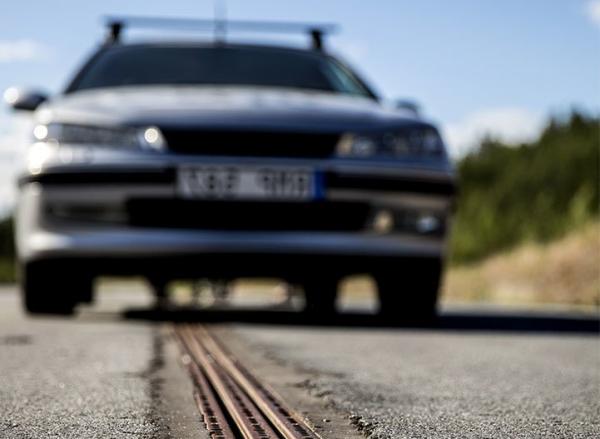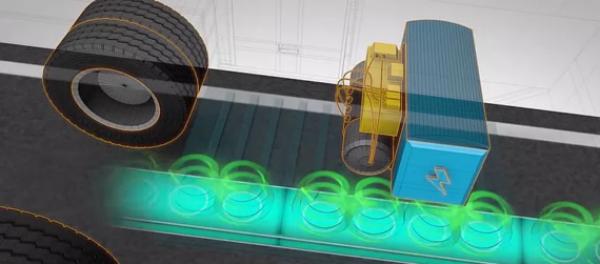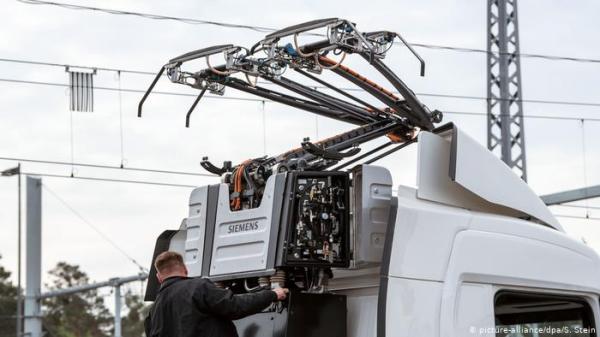Thoughts on electric highways
Back to the future of electric transportation? Maybe.
One way to make electric vehicles really convenient for everybody is “electric highways”, or eHighways: roads that power the electric vehicles traveling on them. In this way, those vehicles could travel long distances without using huge batteries, or stopping too frequently to recharge.
Slot cars 2.0

The Swedish Transport Administration started testing a eHighway in April 2018: 2 kilometers of electrified road that works like a scaled-up slot car track. The project, called eRoadArlanda, uses electric rails embedded into the road surface, to power electric vehicles through a contact arm hanging under the car.
The arm is retractable, and only extends down when it’s above the rails. For safety, the track is earthed to prevent shocks, the electrified conductor is buried deeper down, and only the sections with vehicles passing over them are actually powered anyway. Drainage systems and other measures keep water and gravel out of the way. According to the designers, the gap between the rails is also “too small to cause a problem for motorbike and bicycle wheels”.
Wireless electric trucks

In 2019, the Swedish Transport Administration also started testing a different technology. Unlike eRoadArlanda, this system uses “conductive charging pads that stretch along a lane” to provide wireless charging to properly equipped electric vehicles. The main goal is to “electrify truck fleets economically, without the need to carry huge batteries and stop for charging, and without creating a visual hazard”.
Streetcar-like trucks

Another important test started in 2019 in Germany: the first German ‘electric highway’ for trucks. In this case, we have electrified trucks fed via overhead cables, like traditional streetcars. Protection systems automatically shut down the current if the cable is severed, and avoid icing in the winter.
Pros and cons
(estrapolated from the comments to the eRoadArlanda article)
PROs:
- It is a source of revenue for the highway system
- Provides unlimited range for electric cars, just where most of the long-distance travel is done.
- Only the main arterials would need a rail, and only one lane would need to be electrified.
- Without the needs for long-distance batteries, electric cars would be lighter and cheaper
- Long distance travelers would take a continuous charge, instead of short bursts of charge at charging stations - creating a load leveling effect on electric infrastructure.
- [some day in the future], on highways like this vehicles going downhill could give energy back to the road
CONs:
- A major step backward in technology:
- back to the days of streetcars with overhead lines?
- Slots are only good for slot cars. Only wireless charging can work.
-
Overly complex infrastructure
-
Only governments could approve and pay large scale adoption of this technology, but “in the history of industrial development, the only initiatives to succeed were private ones, driven by entrepreneurs finely attuned to the needs of their putative clients. Government-driven development always fails to meet market needs”
-
It is not true that “the gap between the rails is also too small to cause a problem for motorbike and bicycle wheels.” Drainage grooves already existing on many roads do create problems to motorcycles
-
FRAGILITY: too many things could damage the rails, including the ingress of foreign bodies to damaging fluids. Similar considerations may apply to the overhead cables
Let’s look at those CONs again
The “PROs” make sense to me, at least at a first, superficial sight. The CONs… let’s look at them again.
The first three looks inconsistent, if not ridiculous to me. Backward steps? If there is an age in which real innovation should consists of appropriate technology, regardless of its “age”, is this one. Excessive complexity? There is much, much more unrealistic, excessive complexity in the current visions of 5G for driverless cars than in these systems.
The claim that “Government-driven development always fails to meet market needs” is… not even wrong. The huge market that is the Internet came out of government driven research and investments, to just name one example. I would also argue that, in the last decades, too many invented market needs failed to solve real problems, and created new ones. Did I already mention 5G for driverless cars? Let’s look to the serious stuff, instead.
I agree with critique number 4, because I’ve noticed exactly the same problem on italian roads. But the main obstacle is number 5. Even ignoring accidents, all those systems, especially the “slot car track”, seem fragile to me, and I’m not talking about accidents. I am thinking to vandalism, or even terrorism. All it takes to interrupts those services is a cheap drone dropping small quantities of explosive or acids in the right points. Then again, the same argument is valid for traditional railways, and as far as I know we haven’t seen any such attack there yet. So maybe there is no concrete reason to worry. What do you think?
Who writes this, why, and how to help
I am Marco Fioretti, tech writer and aspiring polymath doing human-digital research and popularization.
I do it because YOUR civil rights and the quality of YOUR life depend every year more on how software is used AROUND you.
To this end, I have already shared more than a million words on this blog, without any paywall or user tracking, and am sharing the next million through a newsletter, also without any paywall.
The more direct support I get, the more I can continue to inform for free parents, teachers, decision makers, and everybody else who should know more stuff like this. You can support me with paid subscriptions to my newsletter, donations via PayPal (mfioretti@nexaima.net) or LiberaPay, or in any of the other ways listed here.THANKS for your support!